Events
On the Importance of Symbols and the Soft Power of a Nation: A General Assembly of the Lithuanian Academy of Sciences
25 06 2025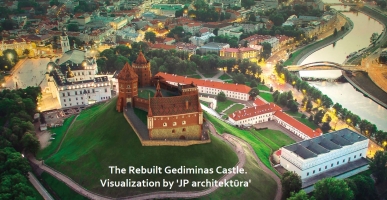
The general assembly of the members of the Lithuanian Academy of Sciences, which took place on 17 June 2025, was also attended by three new foreign members of the Academy, as well as Dr Eglė Radzevičienė, the chair of the board of the Future Biomedicine Foundation, award winners, and the staff of the Academy. The newly elected full members of the Lithuanian Academy of Sciences – Tomas Kačerauskas, Ineta Dabašinskienė, Andrius Vaišnys, Gražina Daunoravičienė, Almira Ramanavičienė, Gražina Tautvaišienė, Ramūnas Garunkštis, Egidijus Rimkus, Arvydas Laurinavičius, Vaiva Lesauskaitė, Modestas Ružauskas, Audrius Dėdelė, Petras Rimantas Venskutonis, and Juozas Valivonis – were presented with membership badges, certificates, and the Statute of the Lithuanian Academy of Sciences.
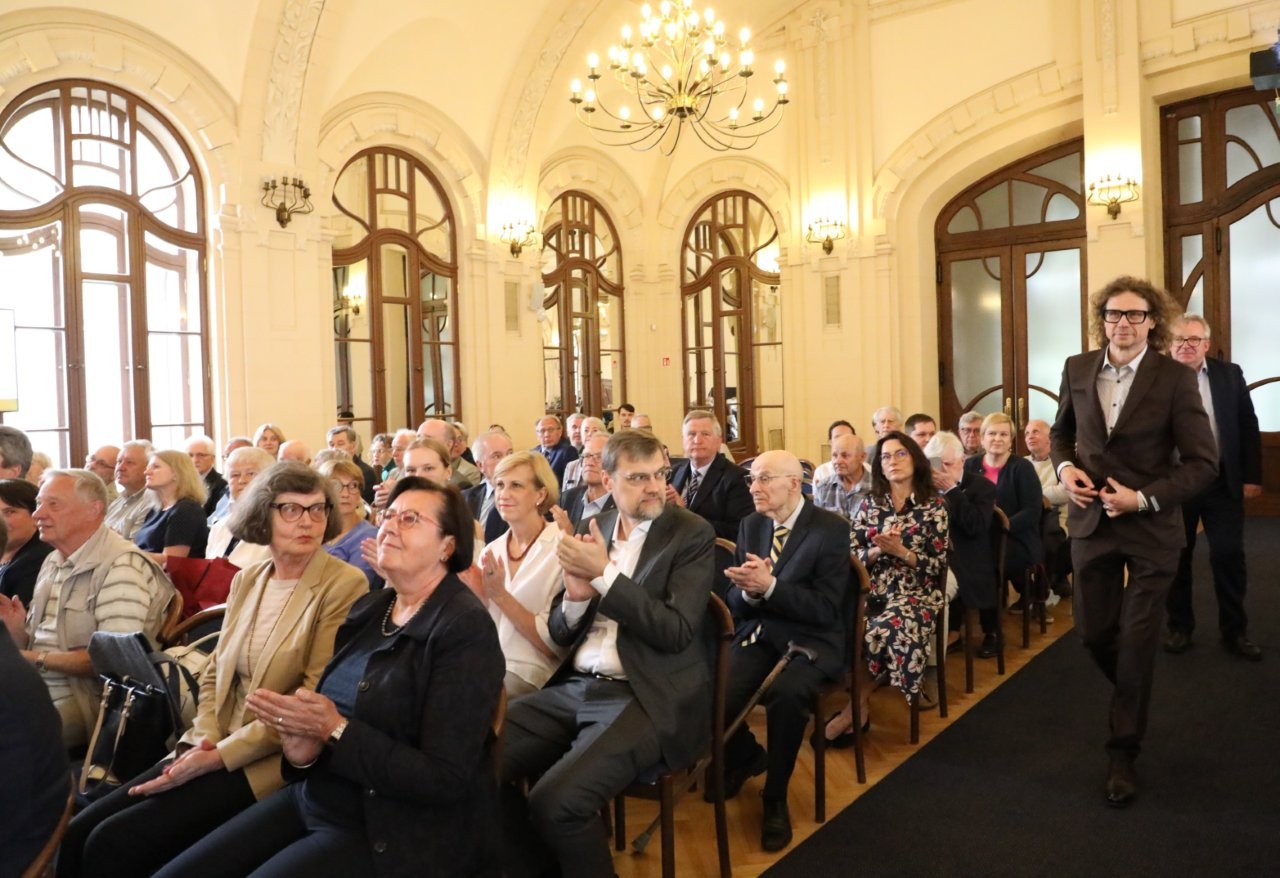
Tomas Kačerauskas, a new member of the Lithuanian Academy of Sciences, is invited to accept a member’s badge and the Statute of the Academy
Young scientists were awarded prizes of the Lithuanian Academy of Sciences and the Future Biomedical Foundation. Dr Rolandas Gedgaudas (Lithuanian University of Health Sciences) received a prize in the field of medicine for his work ‘The role of microbiota in personalised medicine: from gut and blood microbiota research to targeted therapeutic interventions’. Incentive prizes were awarded to three researchers: Dr Agata Mlynska (National Cancer Institute) for her study ‘Towards personalised medicine: research into the immune microenvironment of tumours and the development of innovative immunotherapy strategies’, Dr Giedrė Valiulienė (Vilnius University) for her work ‘Research into medication-resistant depression: in search of biomarkers predicting effectiveness of transcranial magnetic stimulation’, and Dr Raimonda Kubiliūtė (Vilnius University, National Cancer Institute) for her research ‘Fluid biopsy test for early diagnosis of kidney cancer and personalisation of treatment’.
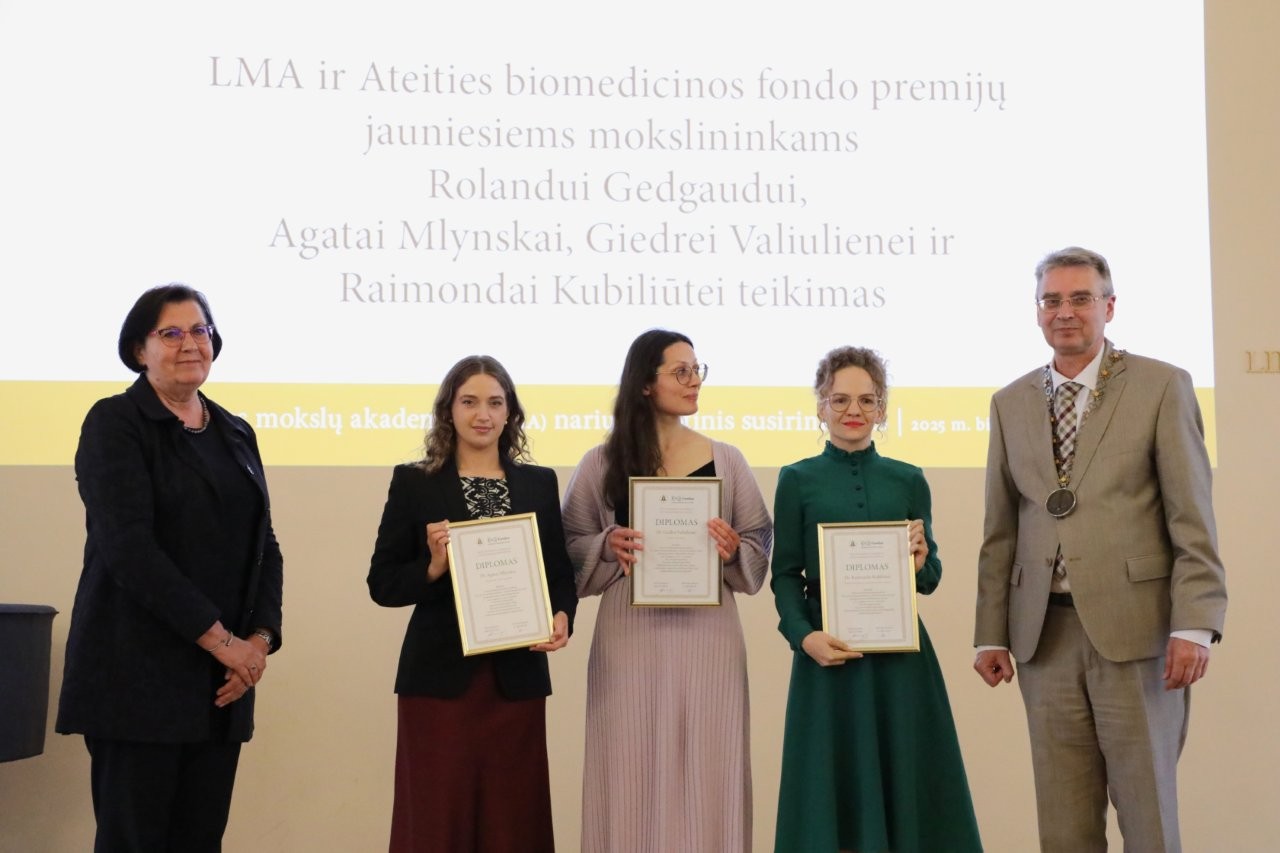
Dr Eglė Radzevičienė, chair of the board of the Future Biomedicine Foundation, winners of the prizes in the field of the life sciences, and Prof. Jūras Banys, president of the Lithuanian Academy of Sciences
Three new foreign members of the Lithuanian Academy of Sciences – Prof. Dr Nazim Gruda, Prof. Dr Mait Metspalu,and Prof. Dr Barbara Elisabeth Lothenbach – were inaugurated at this assembly, each awarded a member’s badge and a diploma. In his inaugural lecture, Prof. Gruda from the University of Bonn spoke about horticulture in the context of climate change. The planet's climate is warming, the greenhouse effect is intensifying, and this is affecting agriculture and horticulture. The trends of temperature rise are similar in Lithuania and around the world. The energy sector emits probably the largest amount of carbon dioxide into the atmosphere, but about 30% of global greenhouse gases are generated by food industry. Gardening thus is not just one of the causes for climate change, but itself suffers from these changes: plants are more actively attacked by pests, extreme weather conditions reduce yields, and there are more storms. Therefore, it is necessary to develop greenhouse gas absorption technologies and make greater use of renewable energy sources. Research by Prof. Gruda and his colleagues shows that due to increased carbon dioxide levels, more of some substances accumulate in plants (which is good), but less of others, e.g., mineral uptake in plants decreases. What is needed is comprehensive action: political reforms are required, and the public must be educated about the consequences. This is an interdisciplinary problem, therefore we need to cooperate.
Prof. B. E. Lothenbach, a specialist in geochemical and thermodynamic modeling of building materials and a chemist working at the Swiss Federal Laboratories for Materials Science and Technology, spoke about her work on the effect of aluminium and magnesium on the stability of crystalline calcium hydrosilicates. Together with Kaunas University of Technology, she conducts research in silicate chemistry and technologies, cement hydration, and their interaction with the environment. The models created by Prof. Lothenbach accurately predict the results of experiments.
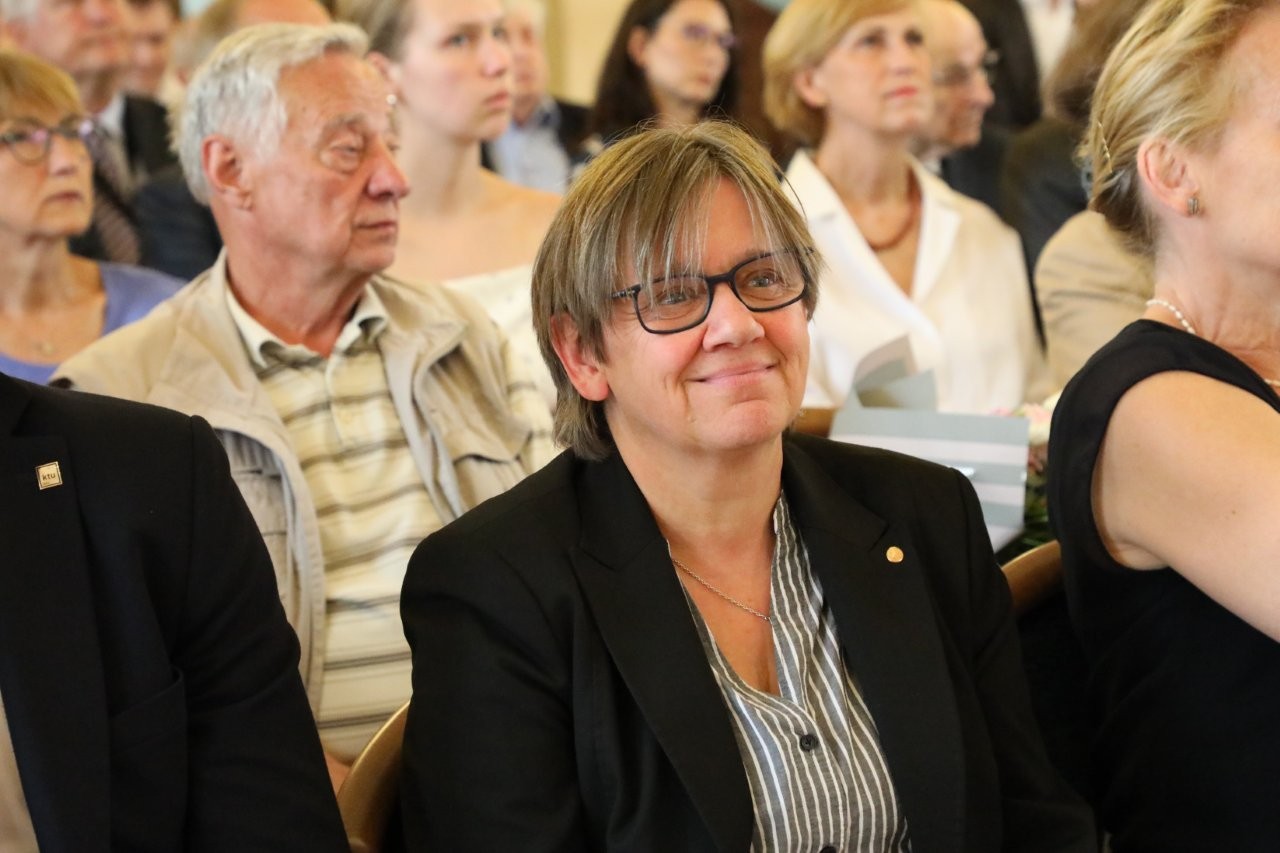
Academician Barbara Elizabet Lotenbach, an inaugurated foreign member of the Lithuanian Academy of Sciences
The topic of the presentation by Prof. Mait Metspalu, an expert in evolutionary genomics, was ‘New horizons in ancient DNA research’. He emphasised that currently, answers to three questions in evolutionary genomics are most sought after. One of them is how gene interaction with the environment affects individual adaptation, in other words, how the modern environment is changing our evolution. Another direction is the role of structural variations and regulatory elements (enhancers, promoters, non-coding RNAs) in evolution and species formation. And the third direction investigates how gene flow shapes the genomic landscape of modern and archaic populations; how evolutionary innovations and resistance arise and how this promotes biodiversity. At the Institute of Genomics of the University of Tartu, Mait Metspalu analyses Estonian migrations that took place thousands of years ago and compares the DNA of ancient and modern populations. In order to better understand the past of a nation (its culture, economy, health, and social structure), geneticists collaborate with archaeologists, linguists, chemists, medical doctors, and social scientists. When traces of genetic material from ancient populations cannot be found, scientists analyse birch tar found in burial sites. Widely used for healing and tool making thousands of years ago, it helps to reconstruct the past without DNA samples.
The next item on the agenda addressed organisational issues related to the forthcoming election of the president, vice-president, and the presidium of the Lithuanian Academy of Sciences. The term of the current president, Prof. Jūras Banys, and some other officials of the Academy ends on 31 January 2026. According to the regulations of the election, a new president must be elected three months before the end of the term of the current president, i.e., by 1 November 2025. A general assembly for the nomination of candidates was suggested to be held on 23 September 2025, and the proposed date of the election 28 October 2025. Both dates were approved by consensus.
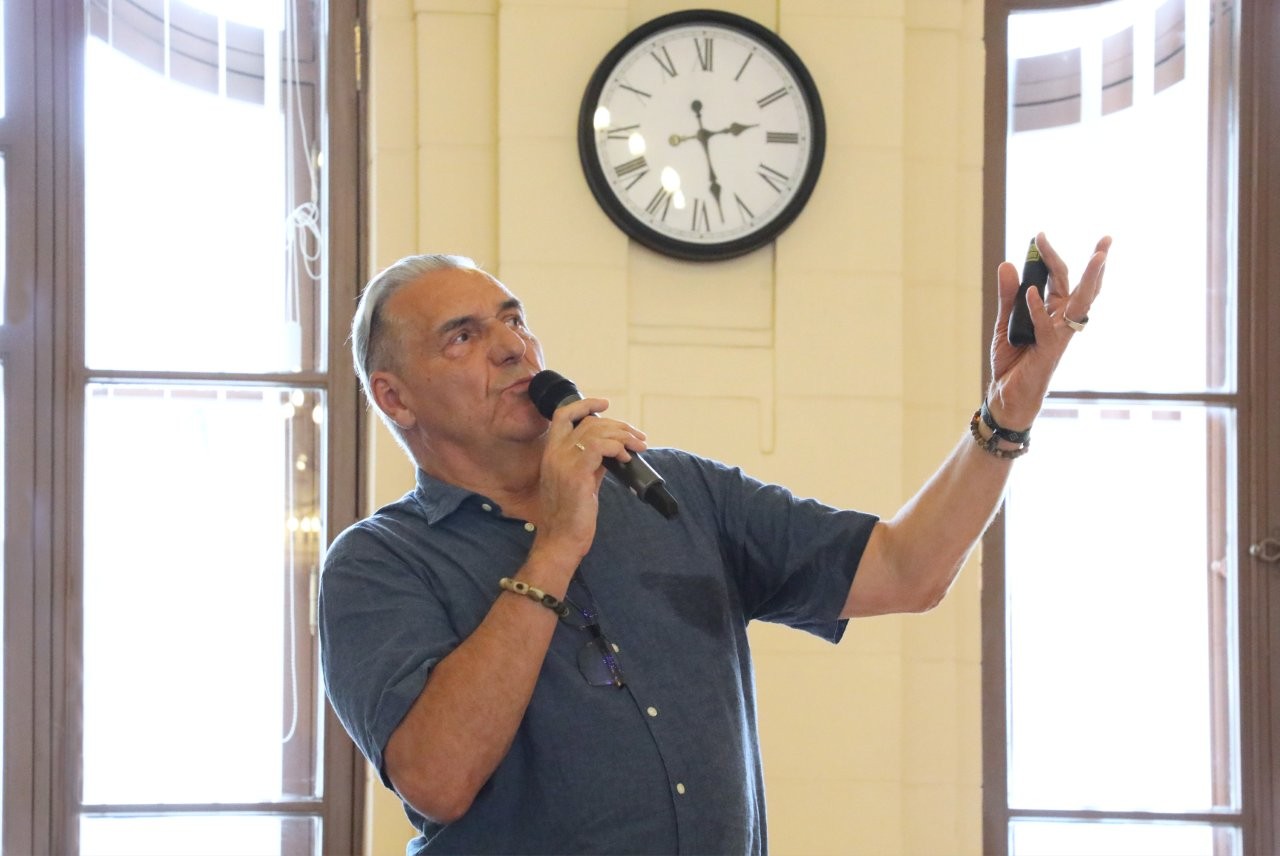
Architect Algirdas Kaušpėdas presenting the vision for the re-creation of the Upper Castle of Vilnius
At the end of the event, the architect Algirdas Kaušpėdas presented his vision for the re-creation of the Upper Castle of Vilnius. He said that in these intensely dramatic times, we must strengthen our powers to defend the state. One of these is the soft power, the symbols of the state. Therefore, it is proposed to rebuild the Upper Castle in Vilnius. Yet is it possible? According to the law, such objects can be sometimes recreated if they possess special artistic or symbolic significance. In Kaušpėdas’s words, we have six form symbols of state, yet there are also the informal symbols, such as amber, basketball, the national costume, and Gediminas Castle. The latter is also a symbol of the nation. Gediminas’s dream is one of the central and most significant legends of the nation. Also, the rebuilt castle would add a harmonious touch to the landscape (like the castles of Salzburg, Edinburgh, Tallinn, Bratislava), while the ruins of Gediminas Castle do not fit in with the cityscape. So far, there has been no formal decision to restore the castle. However, there are many doubts, such as whether the hill is strong enough for the castle. According to the expert Academician Algimantas Grigelis, the structure of the hill is stable. Another question is whether the protected remnants of the castle are authentic. This is also a myth. The castle tower was partially rebuilt by the Poles in 1939. Therefore, ruins exist more in our minds. We have modern ruins, but we are not resolute enough to restore the castle. Finally, what would UNESCO say? The speaker reminded the audience that after the restoration of the Palace of Dukes, this international organization praised Lithuania. Algirdas Kaušpėdas said that the projects for the reconstruction of the Upper Castle were once designed by architects Napoleonas Kitkauskas and later by Sigitas Lasavickas (who developed the first regeneration plan for the Old Town of Vilnius). The implementation of Lasavickas's project was even started with the restoration of part of the Palace of Dukes. As for the castle, the task is made easier by the fact that we have more data about the Upper Castle than about the Palace of Dukes. One of the most important sources is the drawings of Pranciškus Smuglevičius. Hence, based on P. Smuglevičius' drawings, the architects of Jungtinės pajėgos created a three-dimensional image of the Upper Castle. The final model has ‘grown’ from historical material. If the idea were ever to be implemented, Gediminas Castle would become a symbol of a prosperous state. Algirdas Kaušpėdas believes that it is necessary to convince the Seimas to pass the Upper Castle Restoration Act. Academician Algimantas Grigelis added that a noble idea had been presented at the assembly. He said he believed it was time to support it, that it would take many years to implement this idea, but first and foremost, it requires determination and the approval of the people. He said he believed that after considering this idea, the Lithuanian Academy of Sciences would adopt a corresponding resolution, the draft of which is currently being prepared.
Dr Rolandas Maskoliūnas, Chief Specialist for Public Relations
Photography Virginija Valuckienė
Translated by Diana Barnard
